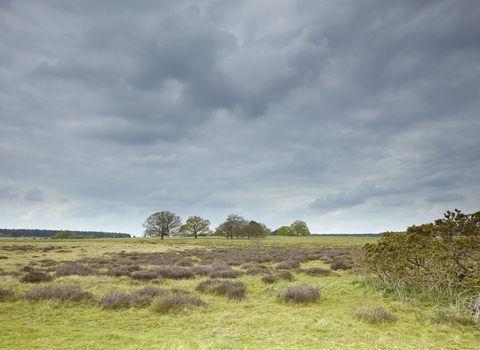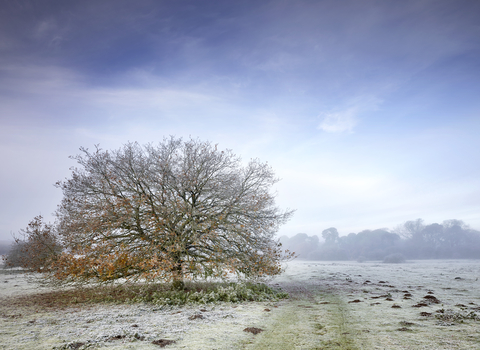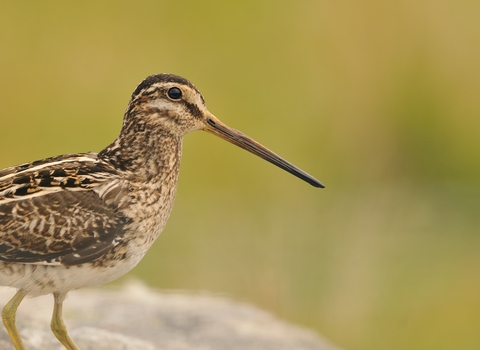Please note: due to a yellow weather warning for high winds, Weeting Heath will be closed on Monday 15 September.
We're making some changes at Weeting, please follow this link before visiting.
Weeting Heath (credit: NWT)
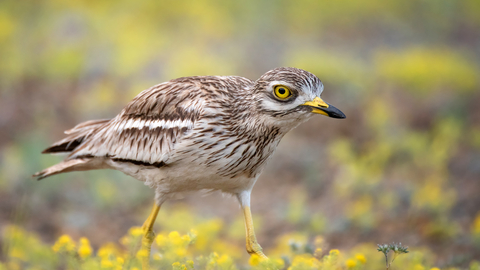
Stone curlew (credit: iStock)
Location
Entrance is from the car park on the Weeting-Hockwold cum Wilton road. Caution – traffic is fast along this road.
OS Map Reference
TL 757 880View on What3Words
Know before you go
Dogs
When to visit
Opening times
3rd weekend in March - end July, 7:00am – 7:00pm.Weekends in August. Weekdays in August by request.
Best time to visit
Spring and summerAbout the reserve
Weeting Heath is an exceptionally important site - a tiny relic of the once vast and unusual Breckland landscape. The bare sandy soil, scattered heaths and short grassy vegetation of the Norfolk and Suffolk Brecks is more reminiscent of the Spanish Steppe than East Anglia.
Well known among birdwatchers, not only for stone curlew but woodlark too. Woodland birds such as crossbill, tree pipit, and the declining spotted flycatcher can be found in the trees around the hides. However, the main star at Weeting Heath is the stone curlew. The stone curlew is a species of wading bird but is not (as its name suggests) related to the Eurasian curlew. In fact, the stone curlew is the only European representative of the thick-knee family and does indeed have rather knobbly knees. Stone curlew plumage is brown and streaky, they have a short strong bill, long yellowish legs, and distinctive large yellow eyes. Their camouflaged plumage, secretive nature and nocturnal habits make them difficult to find. They are easily disturbed, and our hides at Weeting Heath are probably the best opportunity to see these unusual and rare birds without causing unnecessary disturbance.
Many scarce plants and invertebrates live on Weeting Heath. Some of rarest flowers grow in abundance here but virtually nowhere else in the country. Fingered speedwell, Spanish catchfly, maiden pink and rare spring sedge are common. A rare species of spider has recently been discovered here, which is known from only one other location in the UK.
Rabbits, the original architects of the landscape, still play a vital role in managing Weeting Heath’s delicate grassland. Without them, many of the scarce plants would disappear from the site – as well as the stone curlews. The recent decline of rabbits through disease and the increase of manmade nutrients in the environment, such as nitrogen and phosphates, means more intervention is required by our staff to keep the grass sward short. This work is vital to ensure the stone curlew remains here and their haunting, wailing call continues to reverberate through the night.
Species
Habitat
Contact us
Environmental designation
Guide in the hide - April 2025
Head to Weeting Heath's West Hide this month and you will find one of our knowledgeable and enthusiastic guides on site:
Alternate Mondays (12, 26 May): 9am - 3pm
Alternate Sundays (4, 18, 25 May): 9am - 3pm
Tuesdays: 9am - 3pm
Wednesdays: 11.30am - 3pm
Saturdays: 10am - 3pm
Please note that guides may be at lunch or called away if needed.
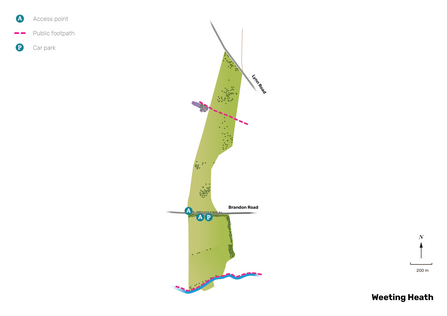
Illustrated map of Weeting Heath.
Seasonal highlights
Early summer is the best time to visit for stone curlew and woodlark, although wheatear and ring ouzel are common during spring and autumn migration.
Many of the rare plants are not accessible to the public, but the woodland trail is great for a good variety of birds and butterflies.

